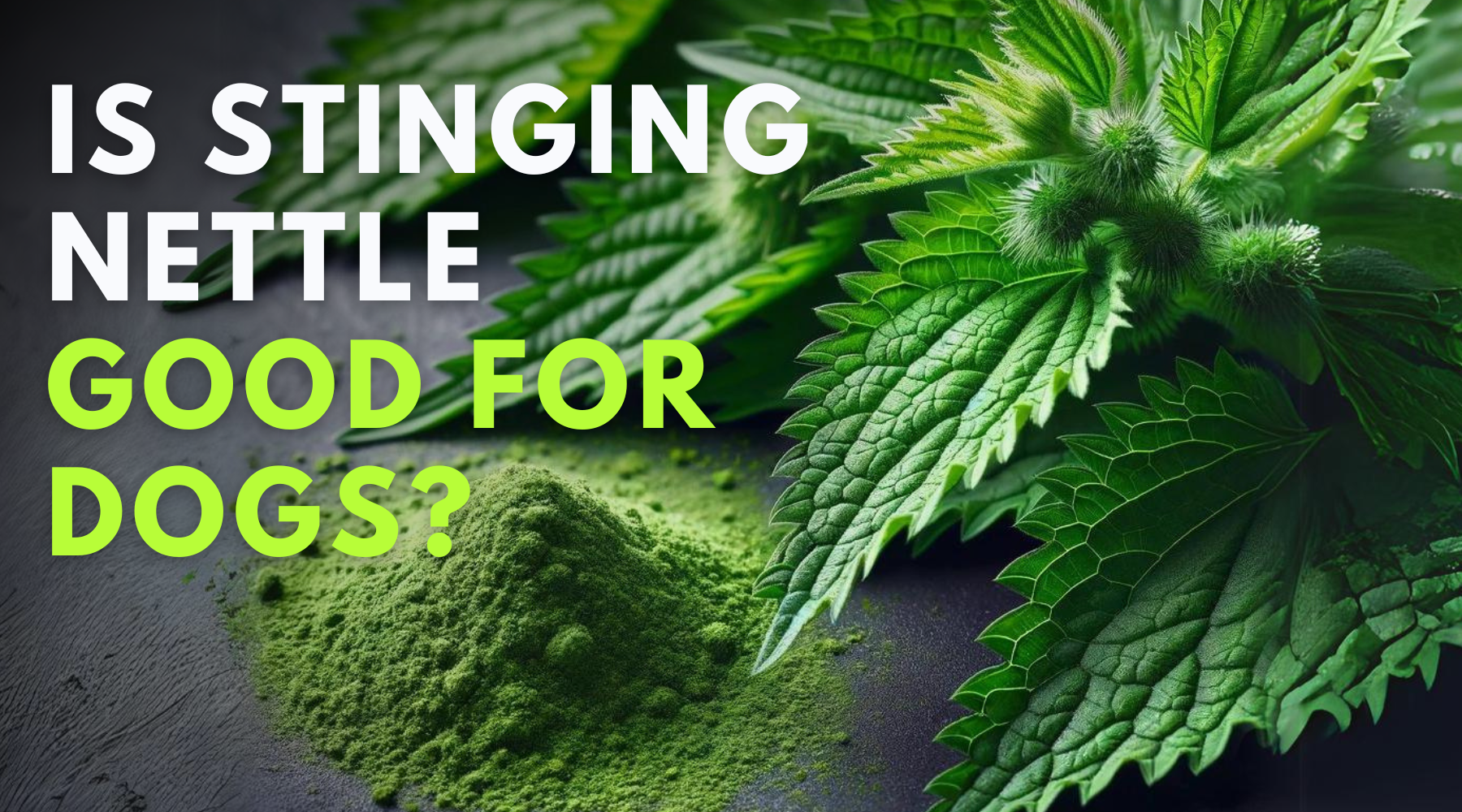The undervalued superfood that deserves your attention
If you have spent a lot of time outdoors, you may be familiar with a prickly plant that is guaranteed to leave a lasting impression. Even with the slightest brush against the skin, a painful sting and welt will form thanks to the tiny, hollow needles that line the stem and leaves of stinging nettle.
Going by the Latin name Urtica dioica, stinging nettle, nettle, or burn nettle can be found growing in almost every country in gardens, fields, and banks of streams. It is one of the most undervalued medicinal plants on this earth.
Rich in vitamins (such as A, C, and K), minerals (including iron, boron, magnesium, and calcium), amino acids, polyphenols, and fatty acids, stinging nettle’s anti-inflammatory, antioxidant, and analgesic properties, make it an excellent supplement for joints, allergies, digestive disorders, and general health.[1]
For centuries, humans have been benefiting from stinging nettle, and recent scientific studies have contributed to its rising popularity.
Is stinging nettle safe or toxic for dogs?
In its natural form, stinging nettle may seriously irritate the skin, the mouth and digestive system (ouch!).
Fortunately, once dried, the formic acid and specific proteins that cause the stinging reaction are neutralized, providing powerful healing benefits for dogs and humans. This is why feeding your dog stinging nettle in either a dry powder or tincture form is crucial.
A curious fact: Nettle Eating Competitions occur in the UK, where participants eat as many stinging nettle leaves as possible within a set time. This might sound like a form of torture to some, but it’s a celebrated event with historical roots and a festive atmosphere.
Benefits of stinging nettle for dogs
- Allergy relief: Stinging nettle, with its antihistamine and anti-inflammatory properties, can mitigate allergic reactions in dogs. This is particularly beneficial when dogs suffer from itchy skin and other allergic symptoms during allergy seasons.[2][3]
-
Cancer support: With its strong antihistamine properties, stinging nettle may help reduce the growth of certain cancers, like mast-cell tumors (MCT), by blocking histamine H1 receptors and preventing degranulation.[5]
- Skin and coat health: The plant’s rich nutrient profile supports skin health, promoting a shiny coat and reducing dandruff and itchiness.[1][2]
- Joint support: Its anti-inflammatory effects help dogs with arthritis, osteoporosis, and other joint issues, reducing pain and improving mobility.[2][5][6]
- Bone health: Rich in vitamin K, stinging nettle contributes to bone health by enhancing osteoblastic activity, which is essential for bone formation and strengthening.[1]
Curious fact: Stinging nettle has been used as a coagulant in cheesemaking. The ability of nettle juice to curdle milk has been exploited in traditional cheesemaking practices, providing a natural alternative to animal rennet. This method also imparts a subtle flavor and increases the cheese’s nutritional value.
- Urinary health: Stinging nettle acts as a diuretic, supporting kidney function and urinary health. It can help flush out toxins and alleviate symptoms of urinary tract infections.[5]
- Brain health: Research has shown that stinging nettle has positive and promising effects on the treatment of Parkinson’s disease. It supports brain cell health, reduces oxidative stress, and slows cognitive decline.[4]
- Digestive aid: Nettle can improve digestive health by supporting the gut flora and aiding in nutrient absorption.[1]
Curious fact: Stinging nettles have been used as a survival food during times of scarcity. They can be boiled to remove the sting and eaten as a leafy vegetable. Additionally, nettle tea is nutritious and has been used historically as a cleansing spring tonic to rid the body of winter sluggishness.
The power of fermentation
Fermenting stinging nettle enhances its benefits. Breaking down the plant’s cellular structure makes its nutrients more accessible and digestible (bioavailable), which also increases its efficacy. Fermentation also introduces beneficial bacteria, contributing to a healthy gut microbiome in dogs.
How to use fermented stinging nettle for dogs
Fermented stinging nettle is an excellent addition to your dog’s diet to help support arthritis and joint health, immune systems, allergies or skin disorders, and bone health and healing. It should be given in powdered or liquid form and makes an excellent joint supplement.
Conclusion
Stinging nettle, particularly when fermented, offers numerous health benefits for dogs, ranging from allergy relief and improved skin condition to joint support and digestive health. However, like any supplement, if your dog has any pre-existing conditions, it is essential to contact your veterinarian or work with a canine herbalist to ensure best practice. With its natural healing properties, stinging nettle is a valuable addition to your dog’s wellness regimen.
References
-
Bhusal, K. K., Magar, S. K., Thapa, R., Lamsal, A., Bhandari, S., Maharjan, R., & Shrestha, J. (2022). Nutritional and pharmacological importance of stinging nettle, Urtica dioica L.: A review. Heliyon, 8(6), e09717. doi: 10.1016/j.heliyon.2022.e09717
-
Wynn, S. G., & Fougère, B. J. (2007). Veterinary Herbal Medicine: A Systems-Based Approach. Veterinary Herbal Medicine, 291–409. doi: 10.1016/B978-0-323-02998-8.50024-X
-
Roschek Jr, B., Fink, R. C., McMichael, M., & Alberte, R. S. (2009). Nettle extract, Urtica dioica, affects key receptors and enzymes associated with allergic rhinitis. Phytother Res, 23(7), 920-926. doi: 10.1002/ptr.2763
-
Albadawi, E., El-Tokhy, A., Albadrani, M., Adel, M., El-Gamal, R., Zaarina, W., El-Agawy, M. S. E., & Elsayed, H. R. H. (2024). The role of stinging nettle (Urtica dioica L.) in the management of rotenone-induced Parkinson’s disease in rats. Cell, 87, 102328.
-
Kregiel, D., Pawlikowska, E., & Antolak, H. (2018). Urtica spp.: Ordinary Plants with Extraordinary Properties. Molecules, 23(7). doi: 10.3390/molecules23071664
-
Randall, C., Randall, H., Dobbs, F., Hutton, C., & Sanders, H. (2000). Randomized controlled trial of nettle sting for treatment of base-of-thumb pain. Journal of the Royal Society of Medicine, 93(6), 305-309. doi: 10.1177/014107680009300607


